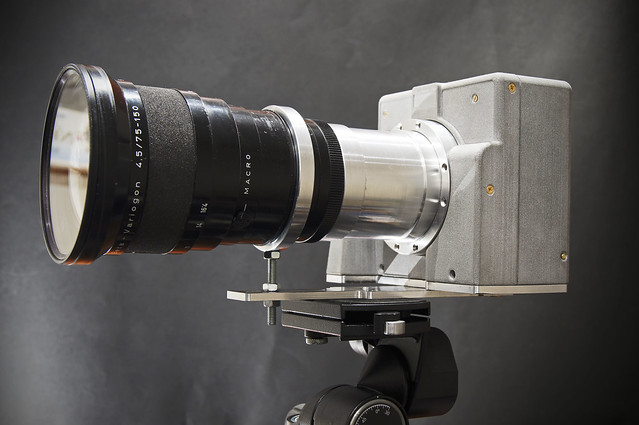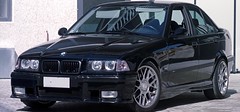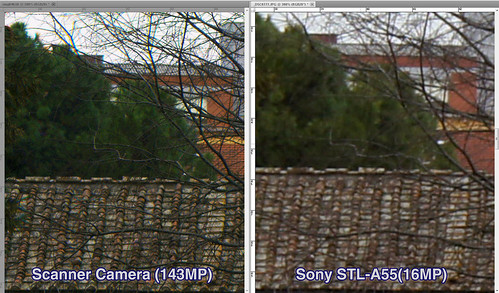T
the scanner-guy
Guest
Ok.. not totally "from scratch" but most of it.
Now I'm near to the completion of the camera, so I thought it can be a good idea to take the project to the attention of this forum, to have some feedback and see if someone has some advice to make it better.

First of all I want you to know, this is not a commercial product, I've built it for myself in my spare time, maybe in the future I'll plan something to earn some money from it, but I have no intention to sell cameras.
Of couse I have not the money to build a large CCD, or even a small one, so I used the components of an Epson scanner (V30) to build a camera similar to the Betterlight scanning back, but medium format, with a live view, quicker, with higher resolution, and first of all, CHEAP. the scanner costs about 90€, and the body and all the machinery inside the camera about 1100€. the lens, from Ebay, 320€
The resolution is the same of the original flatbed scanner, so in the hundreds of MP. I am limited only by the lens and by the scanning time.
The exposure is fixed: I tried to modify the firmware, but it's nearly impossible for me. But I can change the sensitivity using a dimmer connected to the calibration light.
A good scan (like 600dpi, 50MP) can take about 30 seconds, and at 2400dpi takes about two minutes.
I can mount any lens on this camera because I can build any adapter I want, the only problem is the angle of the light on the sensor: I can't use wide angle non-retrofocus lens because causes vignette and color shift (both because of the sensor and the IR-UV filter). I choosed the Beta Variogon 75-150 for this very reason: it's a wonderful lens with a very long focus distance from the sensor, to avoid vignette.
I can provide other information, but I prefer if you ask me what you want to know, because otherwise I'm capable to stay awake all night writing about the camera.
I have no good samples from this camera because I managed to make it work only today. I need a sunny day to test the camera, and I work all week.. maybe next week-end...
SO... what do you think? Is there something that you don't like about the camera? have you some suggestion? Do you know some cheap (under 5-600€)retrofocus lenses(or >70mm non-retrofocus) with very high resolution?
for more pictures visit my flickr gallery
or go to www.projectese.com , but it's under construction, so you will find only information about the early part of the project.
One more thing: I'm not the only one who has built a scanner-camera: in Japan three or four people have their own scanner-camera, with different design from mine.
two of them are YAKU and Takashi Imajo.
Sorry about my bad english, I'm italian, and I don't write in english very often.
Now I'm near to the completion of the camera, so I thought it can be a good idea to take the project to the attention of this forum, to have some feedback and see if someone has some advice to make it better.

First of all I want you to know, this is not a commercial product, I've built it for myself in my spare time, maybe in the future I'll plan something to earn some money from it, but I have no intention to sell cameras.
Of couse I have not the money to build a large CCD, or even a small one, so I used the components of an Epson scanner (V30) to build a camera similar to the Betterlight scanning back, but medium format, with a live view, quicker, with higher resolution, and first of all, CHEAP. the scanner costs about 90€, and the body and all the machinery inside the camera about 1100€. the lens, from Ebay, 320€
The resolution is the same of the original flatbed scanner, so in the hundreds of MP. I am limited only by the lens and by the scanning time.
The exposure is fixed: I tried to modify the firmware, but it's nearly impossible for me. But I can change the sensitivity using a dimmer connected to the calibration light.
A good scan (like 600dpi, 50MP) can take about 30 seconds, and at 2400dpi takes about two minutes.
I can mount any lens on this camera because I can build any adapter I want, the only problem is the angle of the light on the sensor: I can't use wide angle non-retrofocus lens because causes vignette and color shift (both because of the sensor and the IR-UV filter). I choosed the Beta Variogon 75-150 for this very reason: it's a wonderful lens with a very long focus distance from the sensor, to avoid vignette.
I can provide other information, but I prefer if you ask me what you want to know, because otherwise I'm capable to stay awake all night writing about the camera.
I have no good samples from this camera because I managed to make it work only today. I need a sunny day to test the camera, and I work all week.. maybe next week-end...
SO... what do you think? Is there something that you don't like about the camera? have you some suggestion? Do you know some cheap (under 5-600€)retrofocus lenses(or >70mm non-retrofocus) with very high resolution?
for more pictures visit my flickr gallery
or go to www.projectese.com , but it's under construction, so you will find only information about the early part of the project.
One more thing: I'm not the only one who has built a scanner-camera: in Japan three or four people have their own scanner-camera, with different design from mine.
two of them are YAKU and Takashi Imajo.
Sorry about my bad english, I'm italian, and I don't write in english very often.








